Watching the water in motion can soothe your soul, and it can be an even more pleasing experience to watch light play off the ripples while listening to the splash of a fountain. You can enjoy all this and more simply by installing a pond in your backyard. When done right it does not even require a lot of money or land to enjoy your own water feature. Here are some simple reasons why many people do the hard work to have a pond installed in their backyard:
- The biggest reason to install a backyard pond is that it brings character and excitement to your yard. With a pond, you can transform your dull backyard into an exciting ecosystem.
- Have a pond installed in your yard if you want to spend more time outside. When you wake up in the morning, you will have a reason to go out and enjoy your cup of coffee while enjoying the look of your pond. The sound of the water will provide you with a relaxing environment to meditate.
- Having a pond is a simple way to invite nature to your yard. You can add fish to your pond and soon there will be frogs, dragonflies, and even birds that will look amazing while splashing in the waters.
- You can take your gardening to an advanced level by having a pond installed along with aquatic plants. These plants are so fascinating and come in a variety of colors. They certainly add a new dimension to your pond.
Depending on what type of a backyard pond you want, you are likely to spend up to $500 to get a fully equipped, fish-filled pond installed in your home space. Of course, you can make it happen in a cost-effective way when you are ready to do your own digging. You will probably require powerful pumps, rubbery liners, effective filters, and a commitment to take care for them. Here you will find a do-it-yourself guide to help install a pond in your backyard. From everything you need to buy from the store to how you go on to install different equipment to what plants or wildlife to have around your pond, we have everything covered for you.
The project can be demanding, but once you have completed this DIY project, your backyard pond will serve as an endless source of fascination for you and your visitors.
What you Need
In order to get started with a Do-it-yourself backyard pond, you need to proceed in a systematic way and determine exactly what you need and where you want the pond to be installed in your backyard. There are other questions to answer at the same time. But, before going any further, it is important to have some information about the anatomy of a pond. A few key elements work together to help keep your pond clean and water fresh, contained, and filtered.
Water agitator
It helps keep water oxygenated, and bubblers, waterfalls, and fountains are some good examples of agitators.
Filter
It filters the water coming out of the pump and keeps it clean.
Liner
It plays an important role here and ensures that water does not leak into the ground.
Underlayment
It helps keep the liner in a perfect condition and saves it from getting stretched or punctured during installation.
Pump
It works by circulating water through the filter and then up to the fountain or waterfall.
Covered GFCI outlet
It provides power to the pump and trips on its own to eliminate any risk of lethal shocks.
Once you know what you need to install a backyard pond, you may be looking for some other important information too. One of the most important questions is about finding the right location for your backyard pond.
Where to Put Your Pond
It depends on your personal preferences, but the best location for a pond is where you can easily see it from a patio or deck. Opt for a space where it blends in well with natural surroundings. How large your pond can be depends on how much space you have available in your backyard. It is usually better to for a larger pond because it will have better water quality with fewer problems arising from toxin buildup and temperature variances.
While choosing the location, ensure that it helps keep drainage from the pond go away from your house. You can elevate the soil around your pond to guide excess water away from the pond and not into it. Remember, you need a lot more space than the size of your pond because you will have to landscape around the pond to provide a better habitat for birds and frogs. Avoid choosing a location under trees because it requires more maintenance. If you want to grow aquatic plants, your pond should get enough sunlight.
How much money you are going to spend?
This depends on what type of a pond you want and how you proceed. You can get simple kits for as low as $70, which help you set up a 9sq-ft 84-gallon pond in your backyard. If you want a larger pond, you may want to hire a pro. A pro may charge up to $5,000 for a typical 176sq-ft pond. Keep in mind that more grandiose versions are likely to cost you more than $50,000. Therefore, it is really a matter of your starting budget and what you want done.
Should I DIY or call in a pro?
It is a simple enough project to handle all by yourself, but it really depends on the size of the pond. You will be better off hiring a pro in case you want a pond longer than 6 feet and deeper than 18 inches installed in your backyard. It requires so much digging and involves other heavy work that only a professional can handle properly. However, you can certainly have a smaller pond installed in your backyard on your own, and there are many Do-it-Yourself guide to help you accomplish the task. Still, it is a good idea to let a professional handle electrical and plumbing work.
How long is your pond going to last?
You can make your pond last longer by opting for the best quality liner. Some good ones come with a 20-year warranty, but they usually work fine for up to 30 years.
How much maintenance do you need?
It does not require serious maintenance, especially when you have installed a smaller pond on your own. You may have to consider the electricity bill, which may be up to $260/year to run a pump for a simple 176-square-foot pond. Just keep in mind that filters require frequent cleaning.
Getting the Materials
When you do not have much information about what you really need to install a pond, you will be better off buying an all-inclusive pond kit to get started. In other case, you need to buy the following equipment keeping some important points in mind. For instance:
Finding a liner
Use a rope or tape to outline the area in which you want your pond to be installed. Be sure to measure its widest width and longest length to get an idea about the size of your pond liner. Be sure to buy a couple of feet of additional liner to minimize the risk of unwanted drainage.
Choosing a Filter
Opt for a pond filter with mechanical and biological filtration. You may have to spend more, but it certainly makes great sense to buy a filter that also contains chemical filtration. Get an Ultraviolet clarifier in case you want to algae growth under control. Get a better idea about your total pond volume to select a right filter system – you can get it by multiplying the width, length, and depth of your pond to 7.48. The filtration system that costs you less may require more maintenance, so keep it in mind at the time of buying. Also, check the maximum flow rates of your selected filter to select a pump accordingly.
Choosing a Pump
To select a right pump, you have to consider total pond volume and the number of vertical feet your pump must push water. Consider flow charts when buying pond pumps, but it is better to opt for a powerful pump. Remember, you can go with a pump with the flow rate less than the estimated pond volume if you are actually building a water garden. The opposite is true in case you have more fish and a few plants in your backyard – this would require a pump with flow rate greater than the estimated pond volume.
Handling the Plumbing
Some experts are of the view that you can certainly take your backyard pond as a DIY project, but it is better to ask a pro to help you with plumbing and electrical work. However, you can still select the plumbing by getting some information about the basic plumbing pieces required for specific systems. Simply measure the length of tubing that is required to manage your entire system and then select plumbing connectors accordingly. To do it properly, simply go to your pond site and place rocks or other objects where you want to have your filter and pump installed. Now, measure the distance between those objects, add a few extra inches to your measurement, and buy that much of tubing to handle your project. Know the filter size before selecting your connectors. You do not need a connector in case your filter or pump has an insert.
How to Proceed
Now that you know what equipment you need to get started, here is how to proceed.
Before going any further, keep in mind that you may have to be a bit creative while working around the following steps. It usually depends on what shape and size of pond you want to install in your yard. Depending on your area, you may also have to select a different liner material, surrounding material, etc. Nevertheless, the following steps are usually enough help most people install a standard pond with ease.
Steps to Have Your Pond Installed
You can decide to have your pond set up when the ground is not overly wet or frozen. A pre-formed liner makes things a lot easier to handle – all you have to do is dig a hole, insert the liner, check it is level, and backfill around the sides. Now, you have to add pump, water, and plants… and that is really it!
However, you need to go through some hassle when using a PVC liner. Here is how to proceed in that case:
Take a rope and lay it on the ground matching the shape of your pond. Start digging.
Depending on the size of your pond, it can be a bit challenging to dig it on your own. You can ask a friend for help if you are digging a larger pond. Ideally, you should have pond around 24-36 inches deep to allow for a variety of fish and plants to survive in the pond. Here, you can decide to make tiers around the inside of your pond that you can use later to place pots of aquatic plants – ensure the tires are at least 12 inches wide. Be sure to remove any rocks you find in the excavated area and stockpile your topsoil because you can use it to landscape your backyard pond.
It is a good idea to slope the ground toward a sump hole because it will help you when you want to pump your pond dry to clean it. All you would have to do is set your pump in a single spot to help remove all the water. Ensure that the sump hole is no more than 3 inches deep.
Form a ridge around your pond to protect it from runoff that can carry grass clippings, silt, and other debris. It may also contain law chemicals that promote the growth of algae.
It is a good idea to put a layer of damp sand on the bottom to avoid any damage to the plastic. Even a one-inch layer of sand will do. Once done, take the plastic liner and spread it over the hole. When it has sagged, take a few rocks and place around the edge of the liner to keep it in place.
Now, it is time to fill your pond with water. Do it slowly so that the water helps smooth out the plastic liner. While filling the pond, remove all those rocks you have placed on the edges. Once it is in place, you can even walk on the liner.
When there are no wrinkles, you can now place rocks around the edge to keep the liner in place.
Next up, install filter and pump. Again, depending on the size of your pool, you can use a pump with a built-in filter. A larger pool usually requires a separate filter and pump. As mentioned already, you should select the pump and filter as per the total volume of water in the pond.
Congratulations! You have just set up your backyard pond. Do not introduce fish and plants right away – wait for a few days until chlorine evaporates from the water.
What to Plant
To make your pond look amazing, it is important to decide what you want to plant around it. You also need to know what to put in the water. Here are some tips to help you in this regard.
Plants for Ponds
Consider the depth of the water to make a choice. This can be a factor in determining which plants can survive over the winter, especially if you live in cold areas. Some species cannot survive unless there is a minimum of 2-3feet of water.
Be sure to opt for some oxygenator plants. Elodea is a good option here. Always buy from reliable vendors.
You should plant submergent and emergent plants into pots. The good thing is that you can easily get a variety of pots, ranging from pulp planters to plastic baskets. The roots of emergent plants are in the water but have their shoots above water. You can have these placed in the margins of pools. Some good options are arrowhead, cattails, and water lilies.
Consider planting water lily rhizomes, but be sure to make a mound of soil first. It should be in the middle of the pot and the water lily rhizomes should be at a 45-degree angle. Keep the crown of the rhizome toward the center of your pot.
Find some floating species and have the placed directly into your pond. They do not require any additional care. Some good options include water lettuce, duckweed, and water hyacinth. Keep in mind that water lettuce and water hyacinth can cause serious weed problems in the south. Ensure that your plants cover no more than 50-70% of the water surface.
Wildlife for Ponds
The best thing is to stock your pond with native fish. They look amazing and are also quite useful because they keep your pond free of any unwanted insects.
Opt for fish that can tolerate high temperatures if you live in a region where the summer season can be very hot. If you are in colder regions, you may have to install a heater to make it easier for fish to survive.
Be sure to get some scavengers, such as tadpoles and aquatic snails because they help control algae.
Consider keeping Koi in the pond because it looks great, but be sure to know how many plants to include in the pond. Koi munch on plants and can grow up to 36 inches long. Therefore, know how many plants you are going to add to your pond and how many koi your pond can support.
It makes good sense to create areas of shallow water if you want to attract wildlife to your pond. These areas are suitable for the life cycles of dragonflies, frogs, and water beetles. These areas also provide birds with a place to bathe.
Keeping Your Pond Clean
Selecting a right location for your backyard pond is extremely important because it would require serious cleaning if it is right underneath trees. Algae will also be a problem, especially for newly established ponds. The best way to prevent this problem is to have a ‘balanced pond', which means that it should have the right balance of the nutrients appropriate for plants and fish to survive. Algae will take advantage of excess nutrients and light.
Floating plants can be extremely useful here because their broad leaves limit the amount of light required for algae to grow. It is equally important to have a powerful filter installed to keep your pond clean – you should clean the filter daily or every other day.
Be sure to get rid of any decaying plant material after regular basis. Moreover, you should avoid over-feeding your fish because that extra food is going to make your pond look murky. You may also want to install a thermometer to know the temperature of water, which will help ensure that your fish stay healthy and play their role in keeping the pond clean.
Conclusion
The fact of the matter is that a backyard pond not only adds to the beauty of your property, but it also provides you with a tranquil environment to enjoy your life to the fullest. You can certainly use this DIY guide to install your backyard pond, but be ready to spend a few days to complete the project in the right way. Be sure to have a plan of action in mind and know exactly where you want to install your pond and what equipment you need to buy before you start digging a hole in the ground.

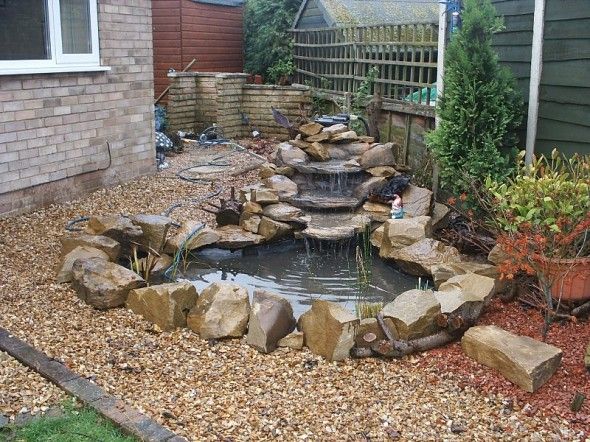
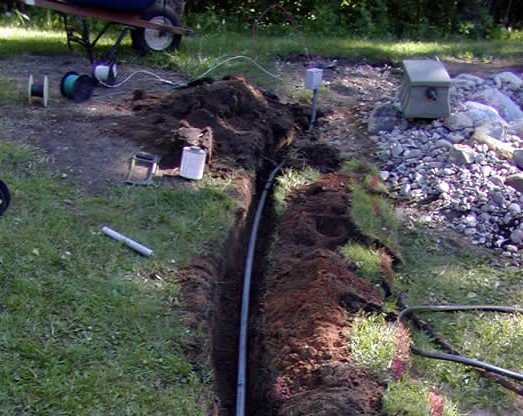
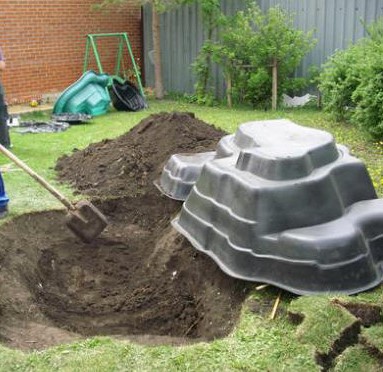



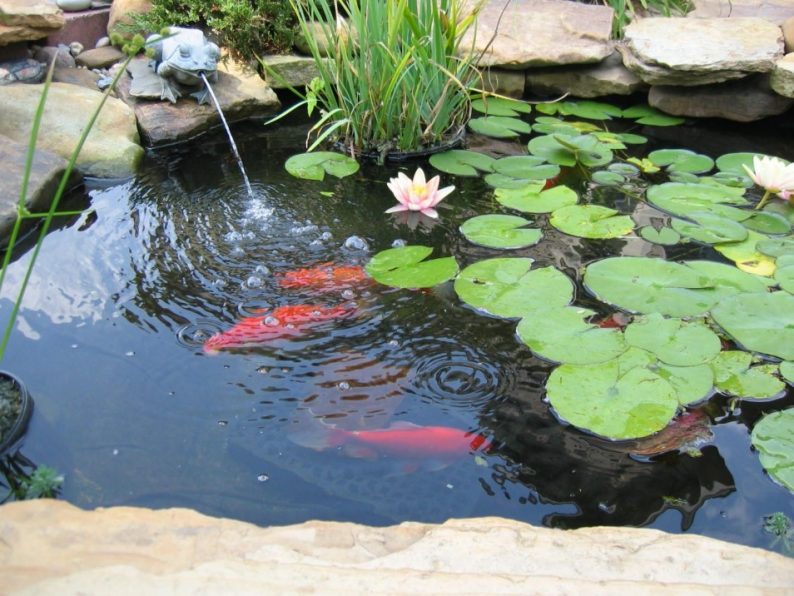
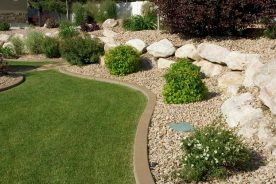
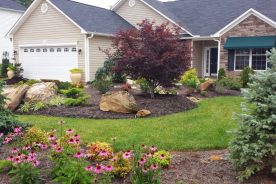


2 Comments
This is an amazing article! Well thought out and full of so many amazing points. Something else to throw in there is to decide what type of pond you want before you build. For instance, if you’re looking to add koi and other fish, the pond needs to be deep enough for them to have places to hide and even hibernate in the off season. Deciding up front will help you design and build exactly what you need. I’m bookmarking this article for my DIY friends and clients. Thanks for sharing this!
Thanks for the feedback and recommendation!